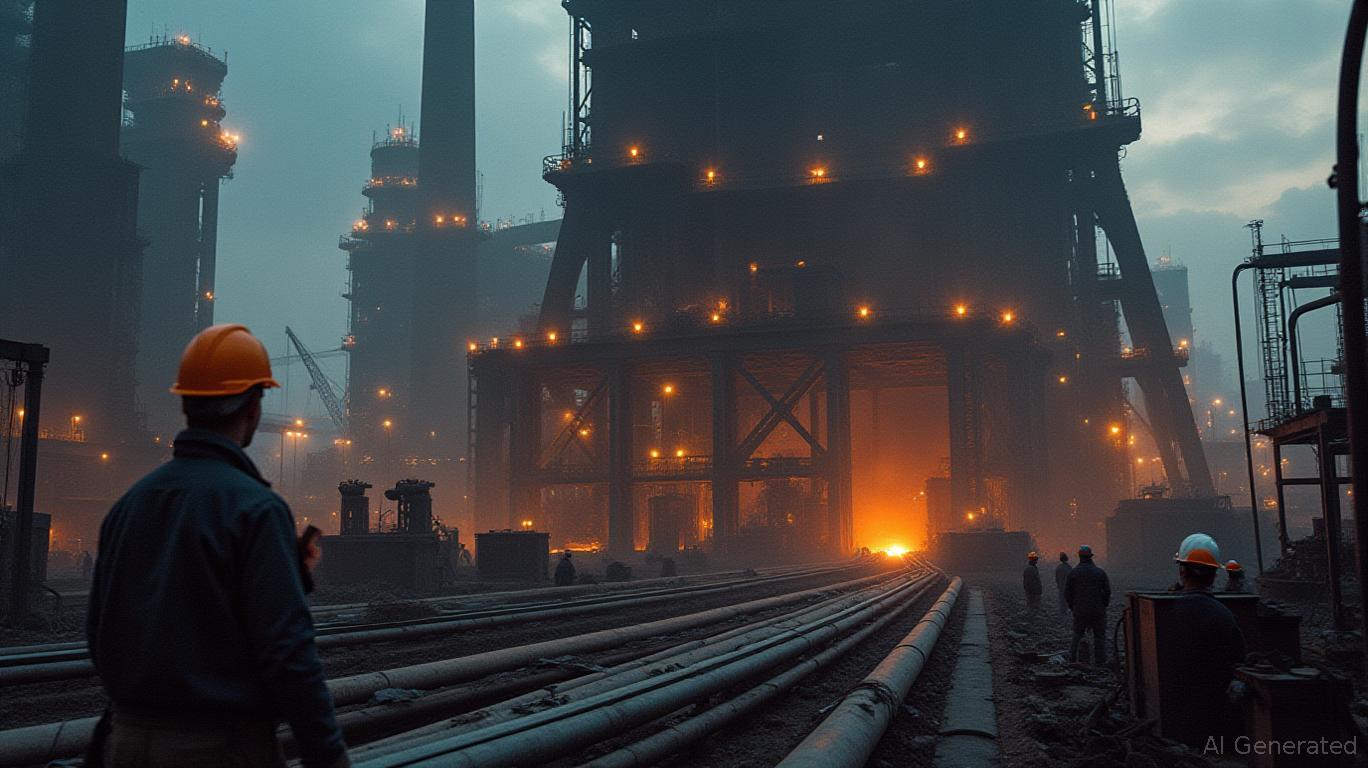U.S. Steel and Aluminum Tariffs: Navigating Turbulence for Asymmetric Returns

The U.S. decision to escalate steel and aluminum tariffs to 50%—with exceptions tied to geopolitical chess moves—has created a volatile landscape for investors. Yet within this storm, opportunities emerge for those willing to dissect sector-specific risks, exploit mispricings, and bet on geopolitical compromise. This analysis identifies asymmetric returns across metals producers, alternative materials suppliers, and geographically diversified manufacturing plays, while cautioning against overexposure to tariff-exposed exporters.
Key Drivers: Tariffs as a Catalyst for Sector Realignment
The Trump administration's 50% tariff regime (excluding the U.K.'s precarious 25% carve-out) has reshaped global trade flows. Key dynamics include:
- Geopolitical Stakes: The U.S. uses tariffs to pressure China on overcapacity and the U.K. on post-Brexit trade terms, while Canada and the EU face retaliatory threats.
- Economic Impact: Steel prices surged 6% in May 2025 alone, while aluminum premiums jumped 54%, squeezing industries like automotive (adding $400–$3,000 per vehicle) and construction (budgets up 8–15%).
- Market Overreactions: Uncertainty around court challenges and
Sector-Specific Risks and Rewards
1. Metals Producers: Winners of Domestic Demand and Tariff Shields
U.S. steelmakers like Nucor (NUE) and Steel Dynamics (STLD) benefit from reduced foreign competition and rising domestic demand. Nucor's mini-mills, which use scrap for cost efficiency, are well-positioned to capitalize on the tariffs. Steel Dynamics' $2.7B expansion into low-carbon aluminum adds further upside.
Why Invest?
- NUE: 2025 EPS projected at $7.88 (up 35% YoY), with $6.5B in capacity expansion.
- STLD: 2025 EPS raised to $10.18, supported by share buybacks and automotive demand.
2. Alternative Materials Suppliers: The Stealth Winners
Companies providing substitutes to steel/aluminum—Dow Chemical (DOW) (resins), Rockwell Automation (ROK) (automation for reshoring), and Applied Materials (AMAT) (semiconductors for advanced manufacturing)—are thriving.
Why Invest?
- DOW: 18% sales growth in Q2 2025 as Asian resin imports became cost-prohibitive.
- ROK: Automation demand soars as manufacturers offset labor shortages and tariffs.
3. Geographically Diversified Plays: Mexico and Canada's Edge
Firms relocating production to Mexico (e.g., Ford's engine plants) or Canada (e.g., Caterpillar's reshored operations) avoid tariffs while maintaining proximity to U.S. markets.
Geopolitical Dynamics: The Clock is Ticking
- U.K. Deadline (July 9): Failure to finalize the U.S.-U.K. trade deal could trigger a 50% tariff hike, destabilizing automotive and pharmaceutical exports.
- EU Countermeasures (July 14): The EU may impose tariffs on $15B of U.S. goods unless exemptions are granted, risking a tit-for-tat cycle.
- China's Silent War: Beijing's counter-tariffs and delayed critical mineral exports underscore the fragility of U.S.-China trade talks.
The OECD's 0.4% GDP downgrade for 2025 reflects these risks, but compromise remains likely given election-year politics and corporate lobbying.
Market Mispricings: Exploiting Overreactions
- Undervalued Longs:
- Cleveland-Cliffs (CLF): Despite a 2025 projected loss, its $50/ton cost reduction plan and vertical integration with AK Steel position it for a rebound in 2026.
Alcoa (AA): Aluminum's green energy narrative and auto industry demand are underappreciated.
Overvalued Shorts:
- Canadian Exports: SNC-Lavalin and Bombardier face margin pressures as U.S. demand shifts to domestic suppliers.
- EU Firms: ThyssenKrupp and ArcelorMittal may see prolonged underperformance if tariffs remain.
Investment Recommendations
Long Positions (Buy Now):
1. Nucor (NUE): Strong balance sheet, capacity expansion, and exposure to infrastructure spending.
2. Steel Dynamics (STLD): Aluminum diversification and shareholder-friendly policies.
3. Rockwell Automation (ROK): Critical to reshoring efforts, with automation demand at multiyear highs.
Short Positions (Sell/Short):
1. SNC-Lavalin (Canada): Vulnerable to U.S. tariff retaliation and delayed infrastructure projects.
2. ThyssenKrupp (Germany): Exposed to EU-U.S. trade disputes and overcapacity in steel.
Risks to Monitor
- Supply Chain Delays: Lead times for steel panels now stretch to 9 months, risking project cancellations.
- Retaliatory Tariffs: The EU's July 14 deadline could trigger a sell-off in U.S. agriculture and tech stocks.
- Legal Uncertainty: Court rulings on tariff legality could destabilize equities.
Conclusion: Act Now—The Clock is on Your Side
The U.S. tariff regime is a high-risk, high-reward environment. Investors who bet on domestic metals producers, alternative materials innovators, and geographically agile manufacturers can capture asymmetric returns. Shorts on tariff-exposed exporters capitalize on temporary overreactions. While risks loom, the likelihood of bilateral compromises—driven by election cycles and corporate lobbying—suggests a window to lock in gains before market sentiment stabilizes.
The time to act is now.

Comments
No comments yet